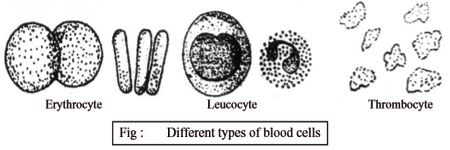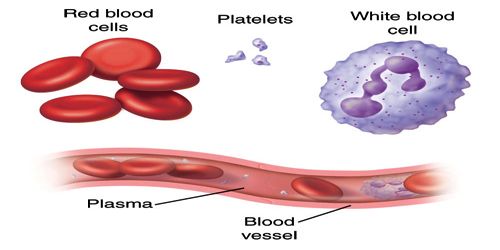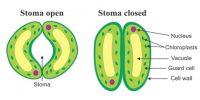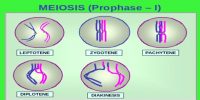Blood Cell or Blood Corpuscles:
Blood is a type of alkaline, slightly saline, red colored, liquid connective tissue. Flowing through the artery, veil and capillaries, blood takes part in internal circulation. Blood, blood vessels and heart together form circulatory system. Blood corpuscles form the major components of blood. Blood cells are of three types. These are:

Red Blood Corpuscle or Erythrocyte: These blood corpuscles contain hemoglobin. Due to hemoglobin color of blood is red. The red blood corpuscles of the amphibians are biconvex, nucleated and oval. On the contrary, the red corpuscles of the blood of mammals are biconvex, non nucleated and round. Haemoglobin is combined with oxygen forms an unstable compound oxyhemoglobin. It breaks down and releases oxygen in places where it is needed.
Functions: To carry oxygen and some carbon dioxide.
White Blood Corpuscle or Leucocyte: These generally lack definite shape and are nucleated. Cytoplasm of white corpuscles are either granular or non granular.
Functions: To destroy germs and take part in self defense.
Thrombocyte or Platelets: These are present in the blood of vertebrate animals. These are usually nucleated and spindle shaped. Nucleus is absent in the Thrombocytes of mammals. The thrombocyte of mammal is also called platelet.
Function: Thrombocytes take part in blood coagulation or blood clotting.














